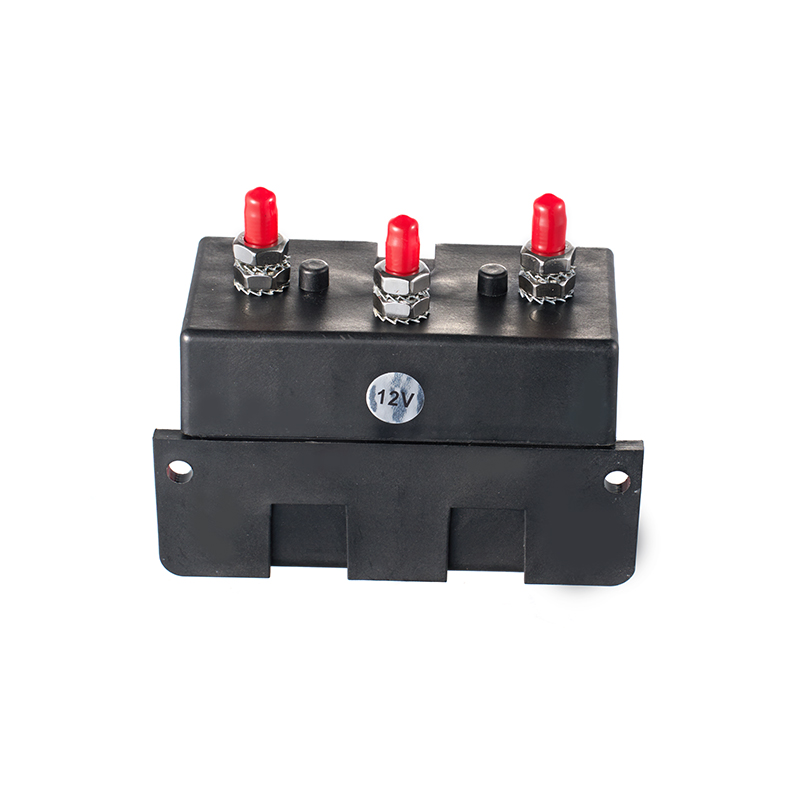- Tel: +86-13385878168
- E-mail: [email protected]
- Please contact us if you have questions.

Web Menu
Product Search

Evaluating the Heat Generation of Winch Relay During Continuous Operation Under Load
When selecting electrical components for a winch system, reliability under sustained use is a critical consideration. One important question often raised by users and engineers alike is whether a Winch Relay tends to overheat during continuous operation. Understanding how heat is generated, managed, and mitigated in such components is key to ensuring consistent performance and avoiding potential failures in the field.

Why is heat generated in a winch relay?
All electrical relays produce some amount of heat during operation. In the case of winch applications, the relay is responsible for switching and maintaining a high current flow between the power source and the winch motor. This high current, often exceeding 200 to 500 amps during peak operation, causes internal resistance within the relay’s contacts and conductive paths. The electrical resistance, even if minimal, inevitably results in thermal energy generation.
The severity of heat buildup depends on several factors, including the duration of use, current levels, ambient temperature, and the quality of the relay design. Prolonged activation, especially in a high-load situation such as winching a vehicle uphill or through mud, keeps the circuit closed for longer periods, increasing the potential for heat accumulation.
Material quality and contact design
The materials used in constructing the relay play a significant role in heat management. High-grade relays typically incorporate silver-plated or copper alloy contact points, which offer low resistance and good conductivity. These materials reduce the amount of heat generated under load. Additionally, relays with robust internal contact pressure help reduce arcing and ensure solid electrical connections, which further contributes to thermal stability.
Poorly designed or low-cost relays may lack sufficient contact surface area or use inferior metals that degrade faster under continuous use. In such cases, heat not only builds up more rapidly but may also cause contact welding, performance degradation, or even catastrophic failure.
Heat dissipation mechanisms
Manufacturers often implement specific design features to manage the heat produced by winch relays. These may include ventilation slots, built-in heat sinks, or heat-resistant plastic housings. Some high-performance models even feature thermal cutoff mechanisms that disconnect the circuit automatically if a certain temperature threshold is exceeded, preventing long-term damage.
In real-world applications, additional cooling is sometimes achieved indirectly through careful placement, such as installing the relay in a well-ventilated engine bay or using metal mounting brackets that serve as passive heat sinks. However, even with these measures, it's essential to follow the manufacturer’s recommended duty cycle to prevent sustained overheating.
Duty cycle limitations
Winch relays are not typically designed for true continuous-duty cycles unless specified otherwise. Most standard relays are rated for intermittent use, such as a few seconds to a few minutes, followed by an adequate rest period. Ignoring this specification and subjecting the relay to prolonged, repeated use without rest significantly raises the risk of overheating.
Manufacturers generally provide clear guidance on the on-time or duty cycle, often expressed as a percentage or seconds per minute. Adhering to these operational limits is crucial for preserving the relay’s thermal integrity and ensuring long-term performance.
Conclusion
While a Winch Relay can produce noticeable heat during continuous operation, whether it overheats depends heavily on its design quality, material composition, and adherence to operational limits. By selecting a well-rated relay, ensuring proper installation, and observing duty cycle recommendations, users can mitigate the risks of heat buildup and maintain safe, reliable performance in demanding winch applications.
Related Products
Request for a call today
-
-
Romy
-
Phone: +86-13385878168
-
WhatsApp: +8613385878168
-
Email: [email protected]
-
-
-
Clark
-
Phone: +86-15397359100
-
Email: [email protected]
-
-
-
Pinky
-
Phone: +86-15305875100
-
Email: [email protected]
-
- Mobile Terminal


 English
English Español
Español













